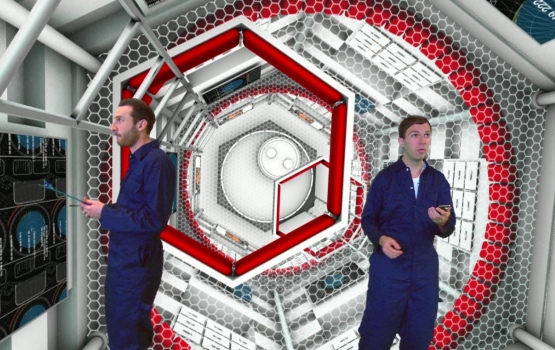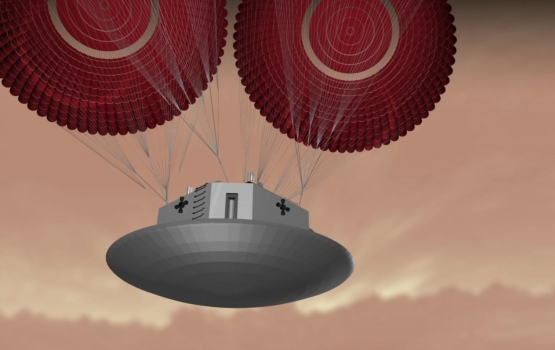

The know-how of Imperial academics helped a BBC journalist to design a mock mission to Mars, which features extensively across the network this week.
The researchers have been working with Neil Bowdler, a video journalist from the BBC, and computer animation experts to design a mission to Mars. They have taken part in interviews, carried out experiments and even helped with media promotion to drum up interest in the programme.
Some of the visual highlights of the programme can be viewed in the slideshow. Images courtesy of the BBC.

The five part programme, How to put a human on Mars, outlines some of the technological challenges that space agencies like NASA will need to overcome for astronauts to land successfully on Mars and return back safely again.
How to put a human on Mars will feature as an interactive series on the BBC News Website and as a mini documentary on the BBC News Channel and BBC World News this week.
The BBC approached Imperial because of its academic expertise in the field of space research. One of the academics involved in the making of the BBC programme was Dr Tom Pike, from the Department Electrical and Electronic Engineering. He has previously worked on two NASA missions to the red planet.
Professor Mark Sephton, from the Department Earth Science and Engineering, who is also helping NASA to design their next mission to Mars, was also involved along with Dr Simon Foster and Martin Archer from the Department of Physics. Ryan Robinson from the National Heart & Lung Institute also took part in interviews and carried out demonstrations to show the effects of weightlessness on the body.
The series explores some of the design challenges of the missions including building a spacecraft that can create artificial gravity on the voyage to prevent muscle wastage in the crew. The researchers also discuss ways of keeping astronauts protected during the voyage from radiation from the Sun, and the challenges of landing a crew safely in Mars’ thin atmosphere.
Article text (excluding photos or graphics) © Imperial College London.
Photos and graphics subject to third party copyright used with permission or © Imperial College London.
Reporter
Colin Smith
Communications and Public Affairs

Contact details
Email: press.office@imperial.ac.uk
Show all stories by this author
Leave a comment
Your comment may be published, displaying your name as you provide it, unless you request otherwise. Your contact details will never be published.










Comments
Comments are loading...